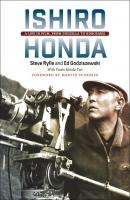Ishiro Honda. Steve Ryfle
Чтение книги онлайн.

Читать онлайн книгу Ishiro Honda - Steve Ryfle страница 29
Название: Ishiro Honda
Автор: Steve Ryfle
Издательство: Ingram
Жанр: Кинематограф, театр
isbn: 9780819577412
isbn:
To the Western viewer, this would seem an unsubtle sexual metaphor—a train speeding into a tunnel—however, it’s not made clear whether the kids go as far as intercourse, and this ambiguity is key: Honda is less interested in whether the youths are going too far astray than in the impossibility of breaking free from the traditional values of family, community, and by extension the whole of Japanese society. In 1950s Japan, the mere appearance of such inappropriate behavior could result in unbearable shame and scorn. These two adolescents, seemingly free and independent minded, are instantly changed forever by a simple, universal act that’s part of growing up. They are burdened with the guilt of having failed to meet expectations and are duty-bound to suffer the consequences, even if it means a life of unhappiness.
This image has been redacted from the digital edition. Please refer to the print edition to see the image.
Poster for Adolescence Part 2, featuring Akira Kubo and Kyoko Aoyama. © Toho Co., Ltd.
Honda elicits fine performances from the young cast, particularly from Kubo, who plays Keita with the sort of muted angst that is at once completely Japanese but universal in the boy’s confused attempts to understand girls, parents, and the looming specter of manhood. There is a powerful sequence in which Keita, beaten and bruised in a fight, is bandaged by a girl who has a not-so-secret crush on him. As Keita lies still, the girl softly kisses him; but rather than accept her affection, the boy walks out and wanders to the school swimming pool and, in a scene breathtakingly shot by cinematographer Tadashi Iimura, swims laps in the moonlight as if to wash off the confusing, conflicting emotions. Keita suffers quietly, internally, worlds removed from contemporary Hollywood teens, who were shouting “You’re tearing me apart” at their own out-of-touch parents. Kubo, just sixteen when this film was made, was beginning a long and fruitful acting career. During the 1950s and 1960s, he mostly played supporting roles as impetuous, hotheaded romantics and heroic types in program pictures ranging from comedies to war dramas. He would appear in numerous other Honda efforts and also play significant parts in Kurosawa’s Throne of Blood (Kumonosu-jo, 1957) and Sanjuro (Tsubaki Sanjuro, 1962).
Конец ознакомительного фрагмента.
Текст предоставлен ООО «ЛитРес».
Прочитайте эту книгу целиком, купив полную легальную версию на ЛитРес.
Безопасно оплатить книгу можно банковской картой Visa, MasterCard, Maestro, со счета мобильного телефона, с платежного терминала, в салоне МТС или Связной, через PayPal, WebMoney, Яндекс.Деньги, QIWI Кошелек, бонусными картами или другим удобным Вам способом.